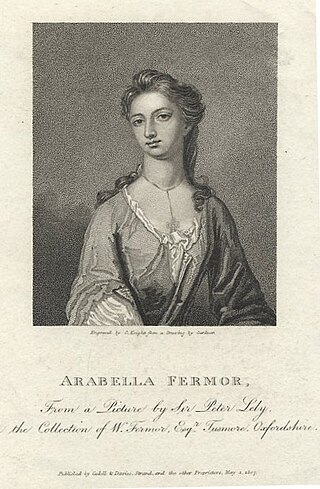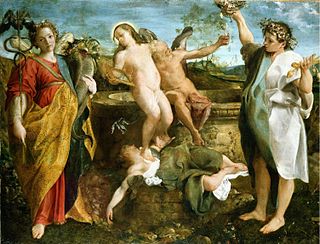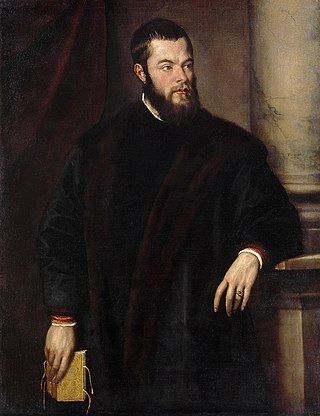
Gotthold Ephraim Lessing was a German philosopher, dramatist, publicist and art critic, and a representative of the Enlightenment era. His plays and theoretical writings substantially influenced the development of German literature. He is widely considered by theatre historians to be the first dramaturg in his role at Abel Seyler's Hamburg National Theatre.

Quintus Horatius Flaccus, commonly known in the English-speaking world as Horace, was the leading Roman lyric poet during the time of Augustus. The rhetorician Quintilian regarded his Odes as just about the only Latin lyrics worth reading: "He can be lofty sometimes, yet he is also full of charm and grace, versatile in his figures, and felicitously daring in his choice of words."

Suspension of disbelief is the avoidance—often described as willing—of critical thinking and logic in understanding something that is unreal or impossible in reality, such as something in a work of speculative fiction, in order to believe it for the sake of enjoying its narrative. Historically, the concept originates in the Greco-Roman principles of theatre, wherein the audience ignores the unreality of fiction to experience catharsis from the actions and experiences of characters. The phrase was coined and elaborated upon by the English poet and philosopher Samuel Taylor Coleridge in his 1817 work Biographia Literaria.

Alexander Pope was an English poet, translator, and satirist of the Enlightenment era who is considered one of the most prominent English poets of the early 18th century. An exponent of Augustan literature, Pope is best known for his satirical and discursive poetry including The Rape of the Lock, The Dunciad, and An Essay on Criticism, and for his translations of Homer.

Simonides of Ceos was a Greek lyric poet, born in Ioulis on Ceos. The scholars of Hellenistic Alexandria included him in the canonical list of the nine lyric poets esteemed by them as worthy of critical study. Included on this list were Bacchylides, his nephew, and Pindar, reputedly a bitter rival, both of whom benefited from his innovative approach to lyric poetry. Simonides, however, was more involved than either in the major events and with the personalities of their times.

The Rape of the Lock is a mock-heroic narrative poem written by Alexander Pope. One of the most commonly cited examples of high burlesque, it was first published anonymously in Lintot's Miscellaneous Poems and Translations in two cantos ; a revised edition "Written by Mr. Pope" followed in March 1714 as a five-canto version accompanied by six engravings. Pope boasted that this sold more than three thousand copies in its first four days. The final form of the poem appeared in 1717 with the addition of Clarissa's speech on good humour. The poem was much translated and contributed to the growing popularity of mock-heroic in Europe.
Mock-heroic, mock-epic or heroi-comic works are typically satires or parodies that mock common Classical stereotypes of heroes and heroic literature. Typically, mock-heroic works either put a fool in the role of the hero or exaggerate the heroic qualities to such a point that they become absurd.

A hierarchy of genres is any formalization which ranks different genres in an art form in terms of their prestige and cultural value.

The statue of Laocoön and His Sons, also called the Laocoön Group, has been one of the most famous ancient sculptures since it was excavated in Rome in 1506 and put on public display in the Vatican Museums, where it remains today. The statue is very likely the same one that was praised in the highest terms by Pliny the Elder, the main Roman writer on art. The figures in the statue are nearly life-sized, with the entire group measuring just over 2 m in height. The sculpture depicts the Trojan priest Laocoön and his sons Antiphantes and Thymbraeus being attacked by sea serpents.
In Latin literature, Augustan poetry is the poetry that flourished during the reign of Caesar Augustus as Emperor of Rome, most notably including the works of Virgil, Horace, and Ovid. In English literature, Augustan poetry is a branch of Augustan literature, and refers to the poetry of the 18th century, specifically the first half of the century. The term comes most originally from a term that George I had used for himself. He saw himself as an Augustus. Therefore, the British poets picked up that term as a way of referring to their endeavours, for it fit in another respect: 18th-century English poetry was political, satirical, and marked by the central philosophical problem of whether the individual or society took precedence as the subject of the verse.

"Ars Poetica", or "The Art of Poetry", is a poem written by Horace c. 19 BC, in which he advises poets on the art of writing poetry and drama. The Ars Poetica has "exercised a great influence in later ages on European literature, notably on French drama", and has inspired poets and authors since it was written. Although it has been well-known since the Middle Ages, it has been used in literary criticism since the Renaissance.

Paragone, was a debate during the Italian Renaissance in which painting and sculpture were each championed as forms of art superior and distinct to each other. While other art forms, such as architecture and poetry existed in the context of the debate, painting and sculpture were the primary focus of the debate.

The Art of Painting, also known as The Allegory of Painting, or Painter in his Studio, is a 17th-century oil on canvas painting by Dutch painter Johannes Vermeer. It is owned by the Austrian Republic and is on display in the Kunsthistorisches Museum in Vienna.
Literature of the 18th century refers to world literature produced during the years 1700–1799.

Maciej Kazimierz Sarbiewski, was Europe's most prominent Latin poet of the 17th century, and a renowned theoretician of poetics.

Joseph Spence was a historian, literary scholar and anecdotist, most famous for his collection of anecdotes that are an invaluable resource for historians of 18th-century English literature.

Kusamakura is a Japanese novel by Natsume Sōseki published in 1906. An English translation by Alan Turney was published in 1965 with the title The Three-Cornered World. Other translations have been published with variations of the original Japanese title, which means "grass pillow" and has connotations of travel.

Jasmina Holbus is a Serbian stage designer, poet and interior designer.
The metabasis paradox is an instance in the received text of Aristotle's Poetics where, according to many scholars, he makes two incompatible statements. In chapter 13 of the book, Aristotle states that for tragedy to end in misfortune is "correct," yet in chapter 14 he judges a kind of tragedy "best" that does not end in misfortune. Since the 16th century, scholars in Classics have puzzled over this contradiction or have proposed solutions, of which there are three from the 21st century. Gotthold Lessing's solution has been the most influential yet there is not a consensus.

On Germany, also known in English as Germany, is a book about German culture and in particular German Romanticism, written by the French writer Germaine de Staël. It promotes Romantic literature, introducing that term to readers in France and other parts of Europe. The book was published in 1813, after the first edition of 10,000 copies, printed in 1810, had been destroyed by order from Napoleon. The book had a major impact on Romanticism in France and elsewhere.
















